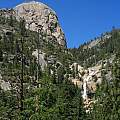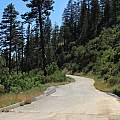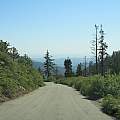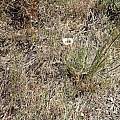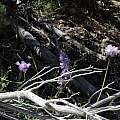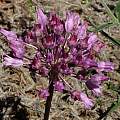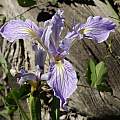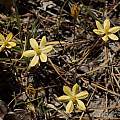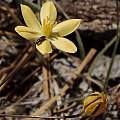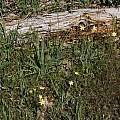North-east of Fresno, California Highway 168 leads up into the Sierra Nevada mountains, eventually dead-ending at the edge of wilderness. The highway and the roads leading off it are narrow, winding, and often poorly-maintained. The poor conditions, plus the fact that the highway does not pass completely through the mountains, makes it more lightly traveled than many other parts of the Sierras. Most of the area has been logged and/or burned in the past, so it is not as heavily forested as you might expect. Ironically, this makes it a good spot for scenery and wildflower hunting because there is a lot of sunlight, and you are not always surrounded by dense trees that block the view.
These photos were taken at the end of June. Late June and early July are the peak bloom time at this altitude (about 5,500 feet / 1,700 meters).
The photos below show a waterfall near the small town of Big Creek, a side road off of Highway 168, and the view from Huntington Lake Road looking west down into the San Joaquin Valley. Photographs by Michael Mace.
Calochortus venustus is widespread in California, but is at the upper end of its altitude range here. This flower, growing among dried grass along a road, is the typical white form, but colored ones also reportedly grow in this area.
This photo shows two unidentified Dichelostemma growing next to a Lupine. All have the same color and bloom at the same time. You wonder if they're not appealing to the same pollinator.
Dichelostemma volubile grows in this area at about 4,000 feet (1,200 meters), along Highway 168 below Shaver Lake. This flower was growing at a scenic overlook that had recently been renovated. The construction crew had stripped off the bushes nearby and covered the ground with jute. But the bulbs were not removed, and were growing up through the fabric. This created an unusual opportunity to see the leaves and long twisting stem of D. volubile, which usually snakes its way up through the branches of overlying shrubs, with only the flower head visible.
Iris hartwegii ssp. australis This evergreen, rhizomatous iris grows at higher altitude than most other Pacific Coast irises, and endures a lot of snow cover during the winter. It's a good candidate for trials by growers in cold climates.
Triteleia ixioides ssp. scabra is one of the most common bulbs in the area. It was growing in sunny grassy areas.
